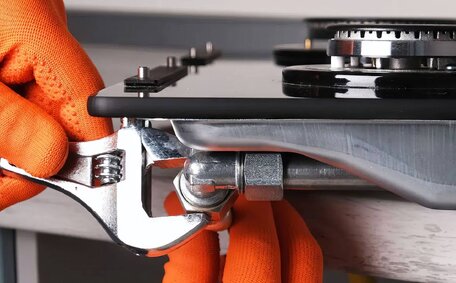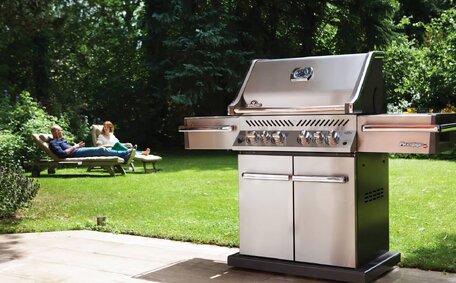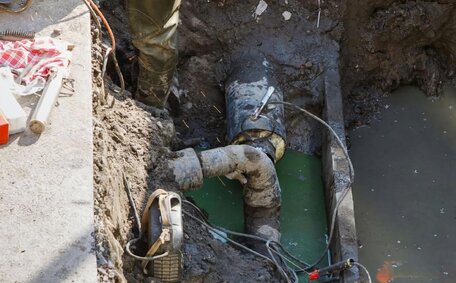
The role of gas fitting in kitchen renovations
When renovating your kitchen, it’s important to engage a licensed gas fitter to safely install, replace or alter any gas appliances and pipes. This ensures
Read MoreGas standards gasfitting in Australia is upheld by a network of national guidelines and state-based gas regulations aimed at safety and reliability. The overarching standard is AS/NZS 5601 Gas Installations, which covers the safe installation and operation of downstream gas distribution systems and consumer piping systems.
Each state and territory has its own regulations that harmonise with AS/NZS 5601, while also detailing unique local requirements including areas such as the positioning of a flue terminal, licencing, compliance certificates, and repercussions for non-compliance. Mindful of the Gas Safety Act, New South Wales adheres to the Gas Supply (Consumer Safety) Regulation 2018, similarly to how South Australia follows its own set of gas safety protocols.
Some key aspects covered under gas fitting regulations across Australia include:
While the principles are consistent Australia-wide, both gas fitters and consumers should enquire more about the specific rules in their state or territory. Failing to adhere to regulations could result in legal penalties or, as grave, unsafe installations that put people and property at any other risk.
For any gas fitting work within Australia, including both natural gas and petroleum gas systems, a gas installation must be entrusted to a licence holder, ensuring oversight by accredited professionals. Gas fitting work includes meeting rigorous standards and servicing installations and appliances fuelled by LPG cylinders.
As you ponder queries such as 'do I need a more comprehensive licence?', bear in mind that there are generally two licence types - one for basic gas fitting work restricted to certain appliances, and the other unrestricted for advanced gasfitters desiring to work on all residential, commercial, and industrial gas systems.
In New South Wales, mobile engine safety, under section of the Home Building Act 1989, is critical in the compliance certificate that was issued for gas fitter licences. All gas fitting applicants must achieve a certificate competency, exemplified by the Certificate III in Gas Fitting from a registered training organisation, paired with recorded hours of practical experience under expert supervision.
The process involves submitting an application form, proof of qualifications and company details if applying as a business. Fees, licence durations and requirements for ongoing training all apply. Failing to hold an appropriate licence or adhering to requirements AS/NZS 5601 when working on gas installations can attract significant penalties.
At Cecil Hills Plumbing, we ensure strict adherence to gas standards gasfitting consumer, requiring all our plumbers and every gas fitter to be fully certified and licensed, keeping pace with current gas installations regulations – it’s one of the many ways we can help. If you have any queries about requirements in your area, contact our team so we can help with obligation-free advice.
To be qualified to carry out and do gas fitting work, technicians must complete formal qualifications and hold state-based certification. The principal pathway to become a registered gas fitter encompasses completing a Certificate III in Gas Fitting, which covers installation of gas pipes and gas fittings, from a registered training organisation. This covers vital competencies like the safe installation of new gas pipe and their fittings:
The Certificate III has a mandatory work placement component where apprentice gas fitters must accumulate hours under the oversight of a licenced gas fitter who is a professional, honing their skills in consumer gas installations. After finishing the qualification, they can apply for a provisional licence and eventually a full gas fitting authorisation once experience requirements are met.
Ongoing professional development is necessary for fitters who aim to keep their gas fitting licences valid in Australia. The refresher courses you’ll need to undertake, as detailed by state regulations and within specified time frames, are crucial for maintaining your licensure. At Cecil Hills Plumbing all our certified gas technicians undertake regular training to stay up-to-date with the latest methods, equipment and safety standards.
To apply within the framework of consumer gas installations regulations for a gas fitting licence in Australia, one must follow these crucial steps:
At Cecil Hills Plumbing, our skilled team, adept at the full range of gas plumbing services, we can help guide applicants through every step to gain their gas fitting certification. Contact us today for personalised assistance with getting qualified.
AS/NZS 5601.1:2022 is the prevailing standard governing the practice ensuring that any gas appliance installed adheres to current regulations, supplanting the older versions (AS 5601-2013) as of September 2022. The standard lays out technical specifications and risk management protocols that, per legal mandate, must be honoured for any gas appliance or consumer piping system that must installed in compliance with regulations.
The release of AS/NZS 5601.1:2022, a new standard that accommodates new gas technologies and the specifics of gas consumption, addresses risks such as corrosion, while assuring continued compliance relevancy. It mandates vital checks and testing that gas fitters in standards gasfitting consumer gas must carry out as well as record-keeping and certification requirements.
A transition period is in effect under the guidance of gas installations regulations 1999, to ensure that new systems—including those for gas water heating—are fitted with compliant mechanisms by September 2024. Any part of gas installations must comply immediately with AS/NZS 5601.1:2022 upon its enforcement.
Gas standards in gasfitting, including gas electricity systems, serve as a crucial benchmark for quality and safety within the gas industry. Poor installation or failure to adhere could endanger life through leaks, explosions or carbon monoxide poisoning. Homeowners should ensure that certificates provided by licensed gas fitters explicitly reference AS/NZS 5601.1:2022 as assurance of exemplary completed work.
The 2022 edition of AS/NZS 5601.1 outlines updated requirements for the safe installation of consumer gas systems in Australia. Some key changes include:
These amendments, acknowledging progress in gas technologies and insights from previous incidents, confirm that when you need gas standards, AS/NZS remains less than outdated. They ensure that the principal gas safety standard must located at the forefront of relevance and efficacy in Australia. Following AS/NZS 5601.1:2022 standards, an appliance must follow more rigorous practices concerning design, materials, testing, and certification to ensure gas fitters maintain the highest work quality.
Gas appliances installed in Australian homes, businesses and other settings are categorised as either Type A or Type B based on their flueing and ventilation needs:
The key difference hinges on oxygen supply and exhaust during gasfitting consumer gas installations. Type A rely on sufficient ventilation within the room, while Type B must ensure their combustion system remains isolated, safeguarding indoor air quality.
A clear grasp of this distinction enables gas fitters to properly undertake duties in line with installations regulations 1999, ensuring correct appliance identification and installation. Mixing up the flueing or ventilation specifications when replacing say an old decorative Type A heater with a new Type B model could lead to dangerous issues with oxygen depletion or waste gas buildup.
Gas fitting work demands that every gas fitter must strictly adhere to safety protocols and standards to prevent serious hazards. Key measures gas fitters must follow in the event of a fire emergency include:
Various compliance inspections and audits, including gas certificate issuance, enforce that gas fitters work in accordance with regulations, highlighting the importance of adherence to supply system standards and proper gas installation associated with each project:
Neglecting key safety protocols, such as emergency isolation, puts occupants’ wellbeing at risk and breaches obligations under the industry’s authorisations regime.
Gas fitting equipment, including the gas meter, used in Australian installations must meet stringent certification standards to ensure safety and compliance. This suite of products must align with the gas installation standard, featuring:
Products, such as LP gas installations designed for use, must be fitted with regulatory compliance markings, demonstrating that all components meet rigorous standards for durability, leak prevention, and combustion characteristics. Only certified, Australian Gas Association-approved equipment can be legally used under AS/NZS 5601.1:2022.
Gas fitters have responsibility for checking certification credentials on all equipment before installation. Lack of gas compliance through the use of non-approved or modified appliances could jeopardize the safety of residents. Homeowners should ensure that your gas fitter verifies certificates of compliance list the makes, models and certification codes of any equipment used.
All new or modified gas installations must undergo inspection and testing to receive certification of compliance with AS/NZS 5601.1:2022. Once an installation has been completed, it’s incumbent upon the gas fitter to carry out extensive tests for leaks, assess appliance combustion efficacy, take meticulous pressure readings, and verify that the installation, whether gas or LPG, aligns seamlessly with Australian standards.
An independent licenced auditor will then conduct their own onsite verification and issue a Certificate of Compliance if all protocols and standards have been properly followed. Certificates list details such as the site address, names/licence numbers of the fitters involved, appliance installed, tests conducted, pressure readings and adherence to the relevant requirements AS/NZS for the final determination on system integrity.
Home and business owners should ensure their gas cylinders are covered under compliance certificates, which are typically valid for 5 years, as proof of the legal safety of their gas system. Certifications obtained from professional gas fitting services may be required for insurance or when transitioning ownership or tenancy of a property. Some states also mandate notifying authorities when certificates are due to expire to prompt re-inspection.
When addressing gas installations in caravans and marine craft for recreational vehicle use, employing licenced professionals is crucial to uphold the paramount safety expected. According to Australian stipulations, only those who are certified gas fitters and suitably trained can legally engage in work where gas supplied is an essential component.
New installations must adhere to requirements AS/NZS such as AS/NZS 5601.1:2022, include pressure testing and leak detection, and subsequently gain certification of compliance from authorities. Ongoing maintenance is also essential - consumers should arrange yearly safety checks, know the signs of faults or leaks, and ensure any issues are addressed immediately.
Neglecting gas system safety endangers those gas your home, with fire, explosion, or toxic gas exposure being experiences everyone wishes to avoid. Home and business owners have a duty to only use a licensed gas fitter for installations, recognise when maintenance is due, and understand emergency shut-off protocols. Adhering to regulations also ensures proper materials, ventilation specifications and appliances authorised for your gas system.
By investing in certified professionals and regular upkeep, Australians who use gas can enjoy the benefits of having gas available with greatly reduced hazard. Contact qualified local experts like Cecil Hills Plumbing to safeguard your systems.
Failure to comply with Australia’s gas fitting regulations, certification requirements and licencing rules poses major safety issues and can attract significant penalties.
Unlicensed or improperly you may not enjoy your new home to the fullest if uncertified gas fitters risk safety by overlooking crucial installation protocols, using substandard materials, or making dangerous system alterations resulting in gas leaks, fires, and even explosions.
Breaches also undermine the quality assurance and risk management safeguards built into standards like AS/NZS 5601.1:2022. Home and business owners could unwittingly have non-compliant gas work done, jeopardising insurance coverage while remaining legally accountable for remediation costs.
If incidents like gas leaks arise due to unlicensed/improper work, owners may face financial liability for property damage, medical expenses or compensation claims on top of rectification expenses.
Depending on the specific offence and jurisdiction, non-compliance fines range from thousands into the tens of thousands of dollars for corporations/individuals or even imprisonment in the most extreme cases.
By only utilising certified gas fitters, Australians can protect property, financial and legal interests while helping eliminate unsafe practises that endanger the community.
Failure to follow gas fitting rules and certification requirements carries severe penalties across Australia. We can help individuals understand that for unlicensed work causing a gas leak, they could be looking at over $22,000 in fines or up to 6 months imprisonment, while corporations might attract penalties exceeding $110,000.
Breach of standards around technical work, materials used or compliance certification also attracts significant fines, especially if safety incidents eventuate. In 2020, a NSW business was ordered to pay $15,000 for using non-approved connectors on a commercial gas system which leaked.
Beyond direct penalties, owners left with unsafe or hazardous gas installations from non-compliant work could face expenses of over $15,000 if extensive repairs or appliance replacements are needed for certification. They may also bear liability for damage if leaks or other issues arise.
By only using certified gas fitters and ensuring appropriate standards are upheld, Australians can avoid the considerable legal and financial risks of non-compliance while helping improve industry safety.
Gas fitting projects involve serious hazards if not conducted safely by qualified professionals. Key risks include:
To mitigate these dangers, gas fitters must adhere strictly to any relevant requirements AS/NZS, including adhering to AS/NZS 5601.1:2022 standards, specifically concerning materials selection, leak testing, location assessments, and ventilation principles. Homeowners should only permit certified technicians to service gas systems and beware signs like odours or sooty stains suggesting abnormal function.
Adhering to regulations plus using reputable licenced experts represents the surest path to safe and legal gas fitting outcomes.
When renovating your kitchen, it’s important to engage a licensed gas fitter to safely install, replace or alter any gas appliances and pipes. This ensures
Read MoreGas line repairs require a licensed plumber to locate any leaks, fix damaged pipes and fittings, and properly seal everything to prevent future issues. Contact our emergency plumbers for safe and proper gas line repairs.
Read MoreDuring emergency plumbing situations, crucial safety precautions include turning off the main water supply to prevent flooding, wearing protective gear to avoid injuries, clearing standing water to minimize damage, and calling a licensed professional plumber for assistance.
Read MoreCecil Hills, 2171 NSW
We will call back as soon as possible.




